BY ERIKA THULIN DAWES & XENIA HADJIOANNOU, ON BEHALF OF THE BIOGRAPHY CLEARINGHOUSE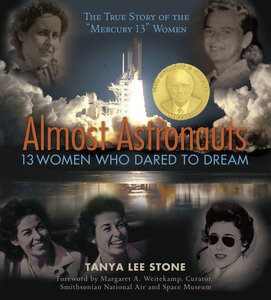 On January 20, 2021, we witnessed the swearing in of the first woman vice president of the United States of America. The oath of office was administered by Justice Sonia Sotomayor, the first Latina member of the court. This celebratory moment stood both as a joyous milestone marking just ‘how far’ women have come and was at the same time a stark reminder of persistent gender inequities in our society. The COVID-19 Pandemic has highlighted continued disparities as women have dropped out of the workforce at far higher numbers than their male counterparts, likely due to disproportionate responsibilities of child care and housework (Bateman & Ross, 2020). As we continue to work toward greater equality for women, here in the United States and globally, it is critical to share with young people the stories of women across history who have worked toward breaking boundaries for themselves and for other women. Tanya Lee Stone’s Almost Astronauts, 13 Women Who Dared to Dream is an important narrative in that history. Stone relates the story of women’s eventual entry to NASA’s space program by focusing on the stories of 13 women who dreamed of being astronauts and proved themselves through a private testing program in the early 1960s to be just as capable as their male counterparts. Almost Astronauts is a history text that is highly biographical. It features life stories, but it is not a traditionally organized biography of a single individual or a collection of biographies. To shape the historical narrative, Stone employs several biographer techniques such as well researched and documented character sketches, biographical blurbs, and narrative episodes. The latter are of particular note, as Stone’s vivid descriptions place the reader in the moment with these women as they pursue their dreams. The book is replete with photographs, as well as reproductions and descriptions of primary source documents and artifacts that support and enhance the narrated events but also help establish their historical context. With a compelling narrative, engaging life stories, and immersive description, Almost Astronauts is a versatile teaching tool for middle and high school classrooms. It fits well in units on space exploration, women’s history, boundary breaking, gender stereotyping, and narrative writing. In our entry on The Biography Clearinghouse, we use the Investigate, Explore, and Create Model to present ideas for using this book in the classroom as a read aloud, a text to use in literature circles, a mentor text, and a resource text.
Below we feature one of two time-gradated teaching recommendations included in the Create section of our Almost Astronauts Book Entry. Composing Multimodal Multigenre Biographies When researching the Mercury 13, Tanya Lee Stone used an array of multimodal primary and secondary sources, which are listed at the back of the book. The book itself includes many photographs, descriptions of images and events, and transcripts of interactions that reproduce or explicitly reference those sources. In our entry on Almost Astronauts at The Biography Clearinghouse you will find a curated list of multimodal resources to open up the world of the book for classroom communities and support an immersive, multimodal engagement with it. In this recommendation, students have the opportunity to engage in their own biography research and experiment with biography composition through a multimodal, multigenre approach.
ReferencesBateman, N., & Ross, M. (2020, October 14). Why has COVID-19 been especially harmful for working women? Brookings Institute Essays. https://www.brookings.edu/essay/why-has-covid-19-been-especially-harmful-for-working-women/ Harper, L. (1997). The writer’s toolbox: Five tools for active revision instruction. Language Arts, 74(3), 193–200. Erika Thulin Dawes is a Professor of Language and Literacy at Lesley University where she teaches courses in children’s literature and early childhood literacy. She blogs about teaching with children’s literature at The Classroom Bookshelf, a School Library Journal blog, and is a former chair of NCTE’s Charlotte Huck Award for Outstanding Fiction for Children. Xenia Hadjioannou is an Associate Professor of Language and Literacy Education at the Harrisburg campus of Penn State University where she teaches and works with pre- and in-service teachers through various courses in language and literacy methodology. She is the co-director of the Capital Area Writing Project, the Vice President and Website Manager of the Children's Literature Assembly, and a co-editor of The CLA Blog. BY WENDY STEPHENS In addition to the ALSC awards described in the previous post, the Young Adult Library Association (YALSA) also designates award-winning and honor books for adolescent literature. Among the best-known awards for adolescent literature is the Michael L. Printz Award for Excellence in Young Adult Literature, administered by YALSA. However, there are many other opportunities to learn about exceptional literature for teens. The life and legacy of Margaret A. Edwards are honored through two award designations:
A shortlist of finalists for two of YALSA's flagship awards -- the YALSA Excellence in Nonfiction for Young Adults Award, honoring the best nonfiction books for teens and the William C. Morris Award, which honors a debut book written for young adults by a previously unpublished author, are announced in December, with the winner of each being part of the press conference.
In addition to designating award books, YALSA also compiles book list resources that can aid librarians and teachers in selecting books that appeal to young adults. A decade ago, YALSA moved four of its lists onto The Hub, its literature blog platform, so that youth services librarians involved in collection development could benefit from more real-time input. All four categories post throughout the year, leading to year-end lists reflecting that year's best titles. Those include:
Outside the Monday morning announcements, there are myriad other titles to explore. Among those, the United States Board on Books for Young People (USBBY) uses Midwinter to announce its Outstanding International Books (OIB) list showcasing international children's titles -- books published or distributed in the United States that originated or were first published in a country other than the U.S. -- that are deemed the most outstanding of those published during that year. RISE: A Feminist Book Project for ages 0-18, previously the Amelia Bloomer Project, is a committee of the Feminist Task Force of the Social Responsibilities Round Table (SRRT), that produces an annual annotated book list of well-written and well-illustrated books with significant feminist content for young readers. There are even genre fiction honors. For the past four years, the Core Excellence in Children’s and Young Adult Science Fiction Notable Lists designates notable children’s and young adult science fiction, organized into three age-appropriate categories, also announced at Midwinter. Next year, we will have another treat to look forward to when the Graphic Novel and Comics Round Table (GNCRT) inaugurates its Reading List. That's a lot of books! What are the can't-miss titles? I train my students to look for overlaps, like Candace Fleming winning this year for information text across age ranges. What does it indicate when the Sibert and YALSA's Nonfiction Award overlap? When a book is honored by both the Printz and YALSA Nonfiction? Though the in-person announcement is exhilarating, especially the view from the seats at the front of the auditorium reserved for committee members, the webcast approximates its energy and allows you to share with students in real-time. To make sure you catch all of the lists, follow the press releases from ALA News and on twitter. Until next January! Wendy Stephens is an Assistant Professor and the Library Media Program Chair at Jacksonville State University. BY WENDY STEPHENSEditorial Note: This post is the first in a 2-part series by Wendy Stephens discussing the rich landscape of book awards announced over the winter months. In this first post, Wendy focuses on ALSC awards and awards by ALA affiliates recognizing books for children or books for a wide spectrum of age groups. The second post, which will be published next week, will present awards for YA literature administered by YALSA, as well as several other notable awards. When we talk about budgeting for materials, I always advise my school librarian candidates to be sure to save some funding for January. No matter how good their ongoing collection development has been throughout the year, there are always some surprises when the American Library Association's Youth Media Awards (YMAs) roll around, and they'll want to be able to share the latest and best in children's literature with their readers. These are the books that will keep their collections up-to-date and relevant. From our own childhoods, we always remember the "books with the medals" -- particularly the John Newbery for the most outstanding contribution to children's literature and the Randolph Caldecott for the most distinguished American picture book for children. These books become must-buys and remain touchstones for young readers. In 2021, Newbery is celebrating its one hundredth year. Some past winners and honor books are very much a product of their time, and many of those once held in high esteem lack appeal today. For those of us working with children and with children's literature, the new books honored at Midwinter offer opportunities to revisit curriculum, update mentor texts, and build Lesesneian "reading ladders." Each award committee has its own particular award criteria and guidelines for eligibility, and its own process and confidentiality norms. Every year, the YMAs seems to be peppered with small surprises. Does New Kid winning the Newbery means graphic novels are finally canonical? Is Neil Gaiman an American? What about all the 2015 Caldecott honors, including the controversial That One Summer? Did the Newbery designation of The Last Stop on Market Street mean you can validate using picture books with older students? How does Cozbi A. Cabrera's much-honored art work resonate at this historical moment? In Horn Book and School Library Journal, Newbery, Caldecott and Printz contenders are tracked throughout the year in blogs like Someday My Printz Will Come, Heavy Medal, and Calling Caldecott. Other independent sites like Guessing Geisel, founded by Amy Seto Forrester are equally devoted to award prediction. Among librarians and readers, there are lots of armchair quarterbacks, and conducting mock Newbery and Caldecotts, either among groups of professionals or with children, have become almost a cottage industry. There are numerous how-tos on that subject, from reputable sources like The Nerdy Book Club and BookPage. But there are numerous other awards announced at ALA Midwinter almost simultaneously that deserve your attention, too. Among the Association for Library Services for Children (ALSC) awards are: the Robert F. Sibert Medal, the Mildred L. Batchelder Award, the Geisel Award, the Excellence in Early Learning Digital Media Award, and the Children's Literature Legacy Award.
Aside from the award winners, each year annual ALSC Children's Notable Lists are produced in categories for Notable Children's Recordings, Notable Children's Digital Media, and Notable Children's Books. If you want to see the machinations behind the designation, those discussions are open to the public this year via virtual meeting links. Outside of ALSC, many of ALA’s affiliates have their own honors for children's literature. These include the Ethnic and Multicultural Information Exchange Round Table (EMIERT) which sponsors the Coretta Scott King Book Awards; the Association of Jewish Libraries which sponsors the Sydney Taylor Book Awards; and REFORMA: The National Association to Promote Library and Information Services to Latinos and the Spanish-Speaking which sponsors the Pura Belpré awards. In addition to these affiliates, others such as the Asian/Pacific American Librarian Association and the American Indian Library Association also present awards. The awards are always evolving to reflect the abundance of literature available for young people. Like the Association of Jewish Libraries and the Asian/Pacific American Librarian Association awards, the American Indian Youth Literature Awards were first added to the televised YMA event in 2018. And this year was the first year for inclusion for a new Young Adult category for the Pura Belpré. Two awards of particular significance are the Stonewall Book Award – Mike Morgan and Larry Romans Children’s and Young Adult Literature Awards are given annually to English-language works found to be of exceptional merit for children or teens relating to the gay, lesbian, bisexual and transgender experience, and the Schneider Family Book Awards, honoring authors or illustrators for the artistic expression of the disability experience for child and adolescent audiences, with recipients in three categories: younger children, middle grades, and teens.
Wendy Stephens is an Assistant Professor and the Library Media Program Chair at Jacksonville State University. BY AMINA CHAUDHRI AND MARY ANN CAPPIELLO, ON BEHALF OF THE BIOGRAPHY CLEARINGHOUSE “William Still’s records, and the stories he preserved, reunited families torn apart by slavery. Because that’s what stories can do. Protest injustice. Sooth. Teach. Inspire. Connect. Stories save lives.” - Don Tate, from William Still and His Freedom Stories: The Father of the Underground Railroad 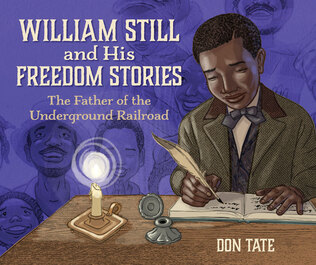 As 2021 begins, we want to acknowledge the continued need to show young people that Black Lives Matter. Part of that responsibility is shifting our curriculum away from a white-centered view of U.S. history and towards a more multifaceted exploration of all of the communities that have lived on this land from prehistory to today. Don Tate’s picturebook biography William Still and His Freedom Stories: The Father of the Underground Railroad, this month’s featured text on The Biography Clearinghouse, is an important text to help make this change in elementary and middle school classrooms. William Still and his Freedom Stories is one of several recent publications that highlights the role of African Americans in the freedom struggle, countering the narrative that freedom from slavery depended on the actions of whites. A precise, linear narrative takes readers through significant events that shaped William Still’s understanding of the world and his role in making it better for African Americans. Readers follow Still from childhood to adulthood, bearing witness to his desire to learn, the grueling labor he endured to earn a living, and eventually, the risks he took to secure freedom for enslaved people and his post-Civil War activism to fight segregation. This deeply-researched and powerfully-illustrated book has layers of curricular potential: as a read aloud, as a mentor text for literacy skill development, as a model of the genre of biography, as an important piece of history, and much more. Operating within the Investigate, Explore, and Create Model of the Biography Clearinghouse, we designed teaching ideas geared toward literacy and content area learning as well as opportunities for socio-emotional learning and strengthening community connections using William Still and His Freedom Stories. Featured here are two teaching ideas inspired by William Still and His Freedom Stories. The first engages students deeply with the text itself - its form and content, and the second extends learning beyond this picturebook to explore multiple sources for inquiry and research.
Advocating for and Learning from 19th Century Black-Authored Texts For far too long, too many students in the U.S. have been taught a white-centered modern history that avoids a close examination of imperialism and the legacy of Europe’s colonial reach. The brutal history of the global slave trade of the 17th - 19th centuries has been marginalized as have the many stories of Black agency, resistance, and liberation. As a consequence, young people - and many adults - have limited knowledge of that history. We need this to change. William Still and His Freedom Stories is one text that helps to make that change. In this teaching idea for middle school students, we leverage the conversations that this book can open with more in-depth research writings of 19th century activists such as William Still and 19th century Black journalists.
Amina Chaudhri is an Associate Professor of Teacher Education at Northeastern Illinois University. She is a reviewer for Booklist and a regular contributor to Book Links. Mary Ann Cappiello teaches courses in children’s literature and literacy methods at Lesley University, blogs about teaching with children’s literature at The Classroom Bookshelf, a School Library Journal blog, and is a former chair of NCTE’s Orbis Pictus Award for Outstanding Nonfiction K-8. |
Authors:
|
CLA
About CLA
|
Journal of Children's Literature
Write for JCL
|
ResourcesCLA-sponsored NCTE Position Statements
|
Members-Only Content
CLA Video Library
|
© COPYRIGHT 2018.
ALL RIGHTS RESERVED |

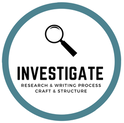
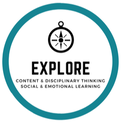

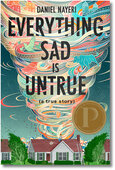
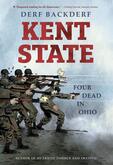
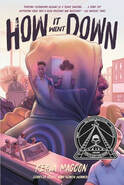
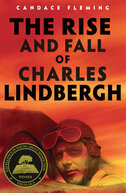
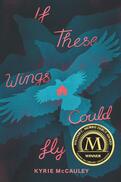
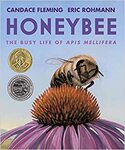
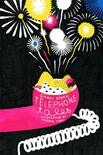
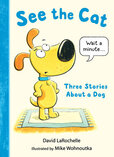
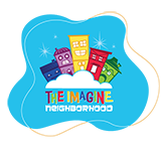
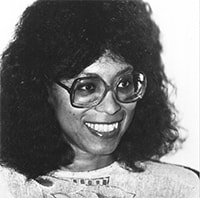
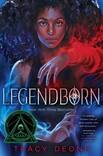
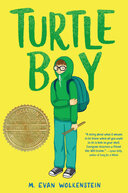
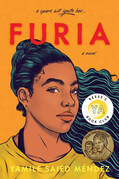
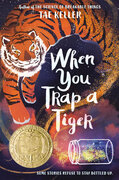
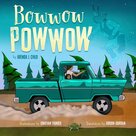
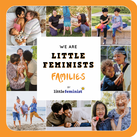
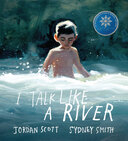
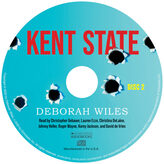
 RSS Feed
RSS Feed